Louis Comfort Tiffany trained as an artist but later developed his passion for glassmaking whilst working at various glasshouses in New York. He set up a design business with some other artists in 1879 which, with his fathers money and connections, lead him to some prestigious commissions such as the design of the interior of amongst others, the Mark Twain House and also The State Rooms of The White House on the insistence of President Chester Alan Arthur in 1882. Tiffany worked on 4 of the important State Rooms along with the Entrance Hall, adding new furnishings, repainting walls in decorative patterns, installing new mantelpieces, changing wallpaper and adding Tiffany glass light fittings, stained glass in windows and an opalescent floor-to-ceiling glass screen in the Entrance Hall. Sadly these were all removed in the Roosevelt renovations of 1902.
Tiffany Studios
Later, Louis Comfort Tiffany decided to concentrate on art glass solely and founded his own glassmaking firm in 1885. In 1902 it became known as Tiffany Studios. Tiffany began to make his own glass in a variety of colours and textures and from there was born his own unique style of stained glass. He developed his own techniques for using and making stained glass with his own opalescent glass made utilising his own copper foil technique. This technique comprises edging each piece of cut glass in copper foil and soldering the whole together to create an object such as a window or lamp. This technique made possible a level of detail previously impossible to create. Previous methods used to create similar items involved painting in enamels or glass paint on clear glass, and then setting the glass pieces in lead channels a method that had not progressed over the hundred of years it had been used.
The first Tiffany lamps were produced in around 1895. Louis Comfort Tiffany showcased all of his skills in the design of his own mansion, Laurelton Hall, on Long Island, completed in 1905 (which unfortunately was destroyed by a fire in 1957).
Tiffany Studios went from strength to strength, at it’s peak employing more than 300 artisans including many women designers. Tiffany not only designed and made lights, but also stained glass windows, mosaics, ceramics, jewellery, enamels and metalwork.
Original Tiffany objects are still highly regarded and collected all over the world.
The Victorian Emporium's Tiffany style lighting products pay full homage to the Tiffany originals and typically feature stained and art glass pieces, copper foiled together, and which look especially eye catching with a lit electric bulb inside. Our collection is extremely varied: from highly traditional styles to more contemporary interpretations in deep jewel tones with intricate patterns to serve as a statement piece in your home or pieces with a light, neutral palette that offer the beauty of stained glass as a subtle complement to your room décor.
Tiffany Ingle Island Shade - £945.
Where you can see more original Tiffany pieces?
- The Charles Hosmer Morse Museum of American Art in Winter Park, Florida houses the world's most comprehensive collection of the works of Louis Comfort Tiffany, including Tiffany jewelry, pottery, paintings, art glass, leaded-glass windows, lamps, and the Tiffany Chapel he designed for the 1893 World's Columbian Exposition in Chicago.
- The Queens Museum of Art features a permanent collection of Tiffany objects, in the location where the company's studios were once located.
- Montreal Museum of Fine Arts in Montreal, Canada
- Two windows in the American Church in Paris, on the Quai d'Orsay, are Tiffan originals and have been classified as National Monuments by the French government
- Haworth Art Gallery in Accrington, England contains a collection of over 140 examples Tiffany’s work , including vases, tiles, lamps and mosaics.
How Tiffany lights are made step by step
- The pattern is traced from a template then the artisan hand cuts the art glass.
- Each piece of glass is then ground to fit the shape of the mosaic pattern required.
- Each piece of glass is then cleaned and copper foiled.
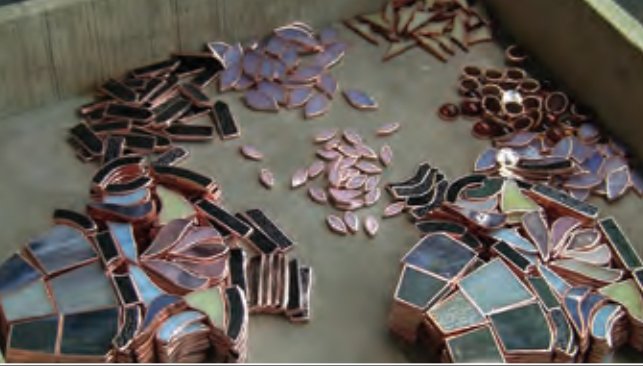
- Flux is then applied to the copper foil and each mosaic piece is put into place within the fibre glass mould.
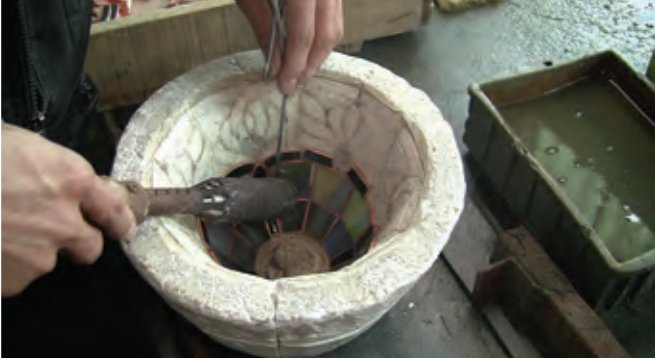
- The shade is soldered together on the inside with lead solder, and again on the outside to strengthen construction.
- A Bronze patina is applied to the solder; it is then hand waxed to protect the solder from oxidization and polished to give a lustrous finish.
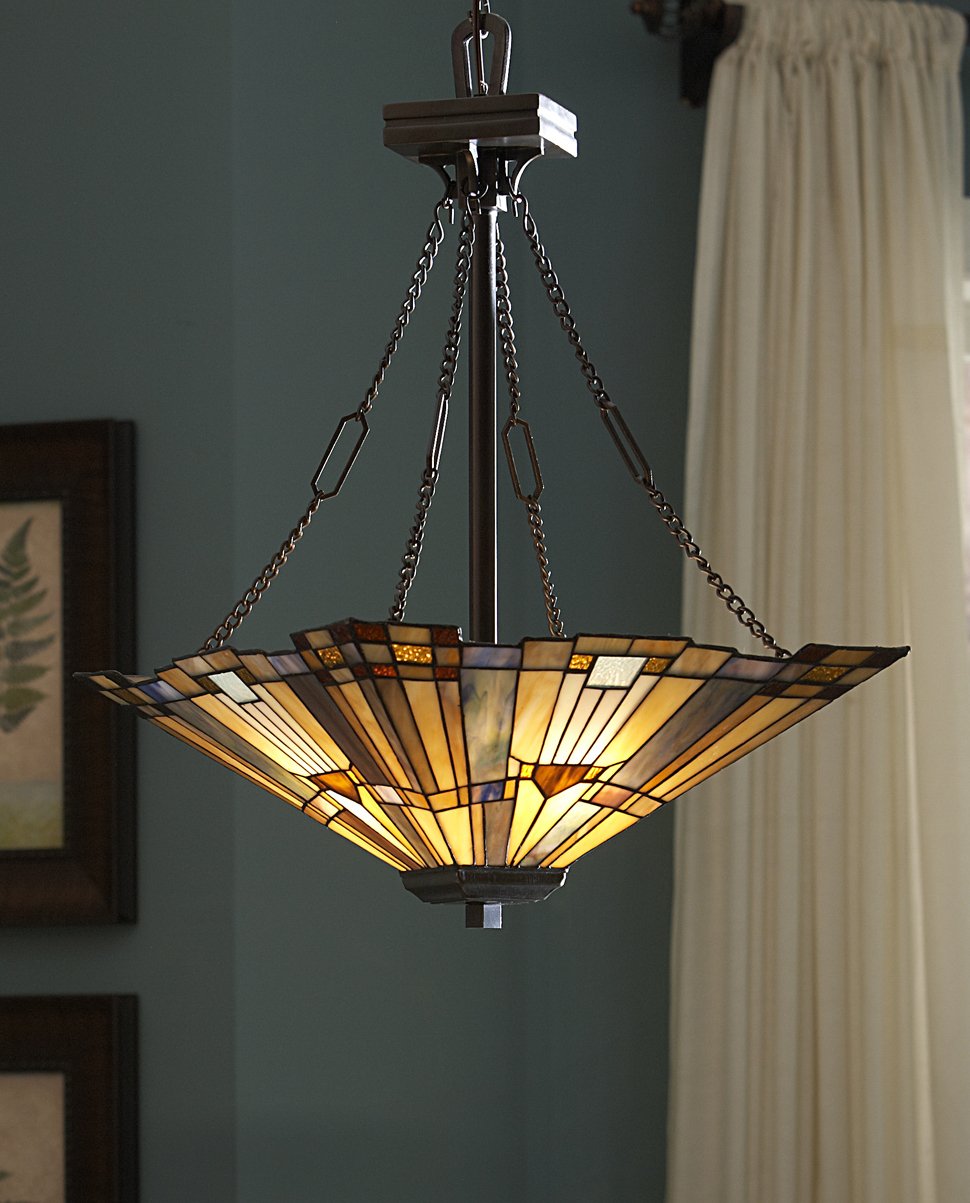
Tiffany Ingle Pendant £355.20
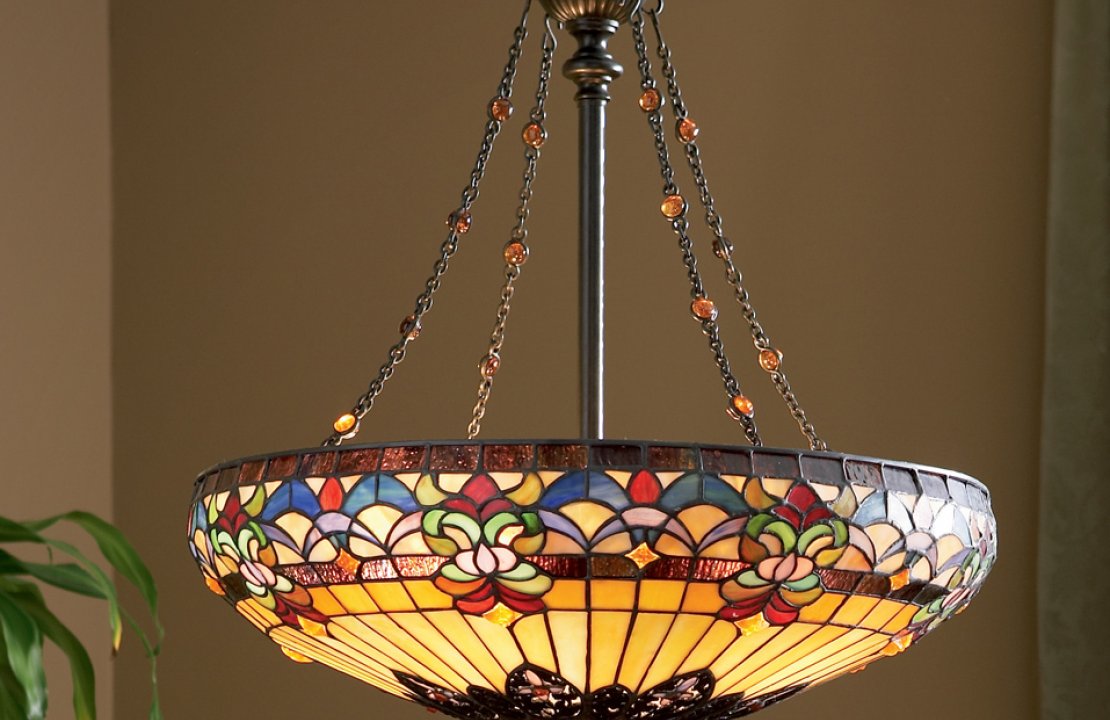
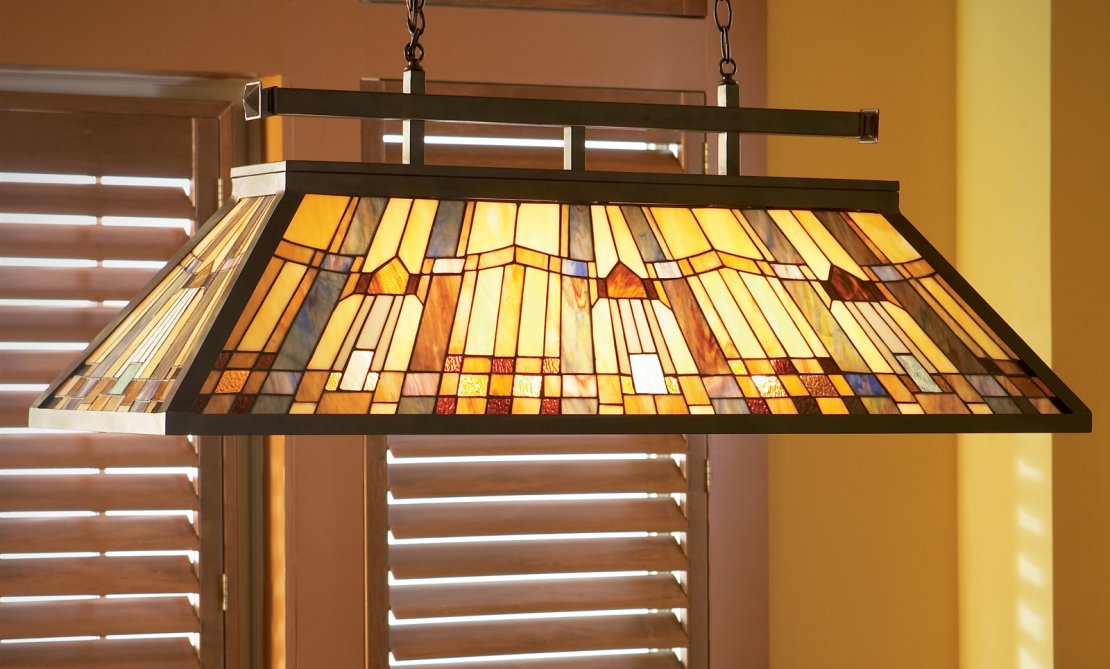
Be the first to add a comment...